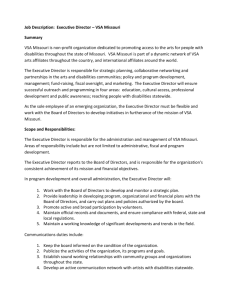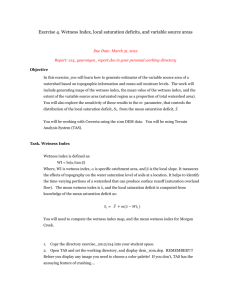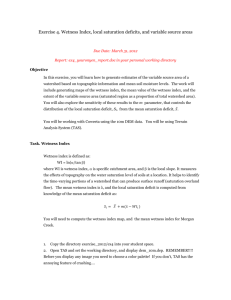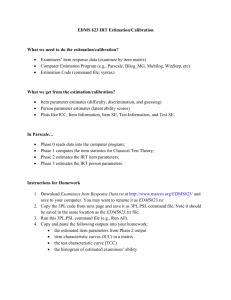ex4_qz_report
advertisement
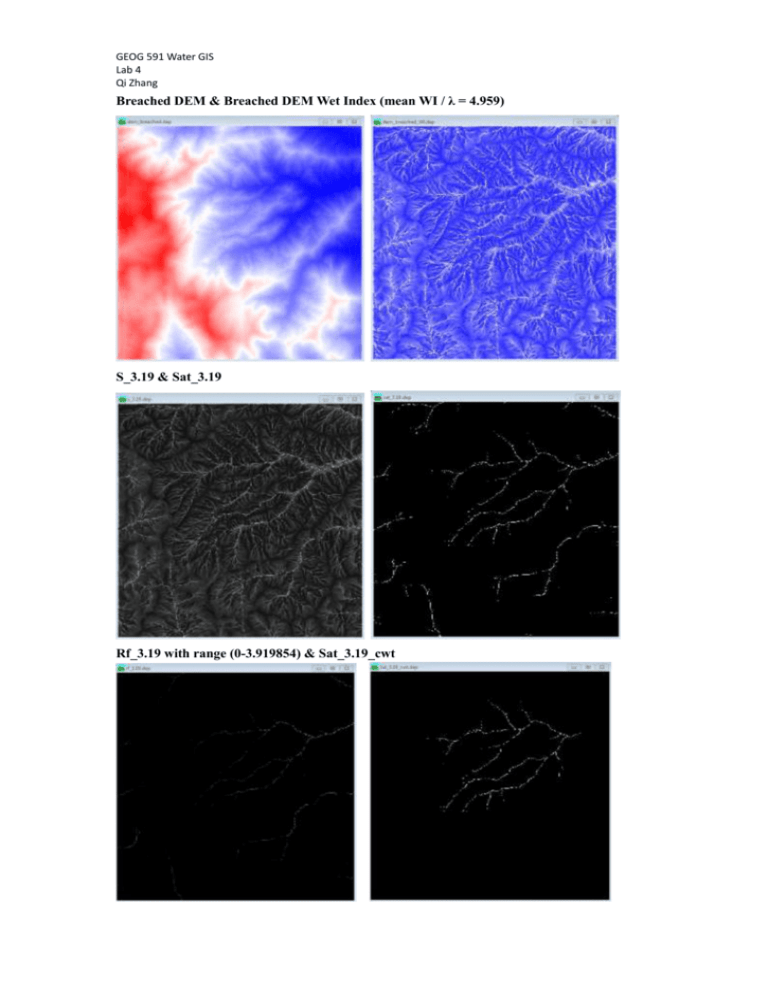
GEOG 591 Water GIS Lab 4 Qi Zhang Breached DEM & Breached DEM Wet Index (mean WI / λ = 4.959) S_3.19 & Sat_3.19 Rf_3.19 with range (0-3.919854) & Sat_3.19_cwt GEOG 591 Water GIS Lab 4 Qi Zhang Sat_3.19_cwt_area & cwt_mask_area The total saturated area = 171900 m2, the catchment area = 1.61348 x 107 m2 So, Variable source area = 171900 / (1.61348 x 107) = 0.01065399 Part 1 Other 4 values of mean saturation deficit were selected, which together with 3.19 were: 2.51, 2.86, 3.19, 3.57, 3.82 The results showed below in the table 1. Table 1 Values for different mean saturation deficit (m=0.4517) Value # 1 2 mean saturation deficit Total saturated area/m2 Catchment area/m2 Variable source area 2.51 2.86 333000 238600 1.61348 x 107 0.02063862 0.01478791 3 4 5 3.19 171900 3.57 126000 3.89 93900 0.01065399 0.00780921 0.00581672 VSA - Smean Plot (m=0.4517) 0.024 0.022 0.02 0.018 0.016 0.014 0.012 0.01 0.008 0.006 0.004 0.002 0 VSA Linear (VSA) y = -0.0105x + 0.0457 R² = 0.958 2.4 2.6 2.8 3 3.2 3.4 3.6 3.8 4 Fig. 1 Plot for VSA to Smean 4.2 GEOG 591 Water GIS Lab 4 Qi Zhang With the increase of mean saturation deficit, the VSAs decrease as an exponential trend. This indicates that the total saturated area decreases as mean saturation deficit get higher, which is associated with high sensitivity in lower level. Part 2 Now 0.6289 has been selected for m value, and the same process was repeated. The results showed below. Table 1 Values for different mean saturation deficit (m=0.6289) Value # 1 2 mean saturation deficit Total saturated area/m2 Catchment area/m2 Variable source area 2.51 2.86 643300 505200 7 1.61348 x 10 0.03987 0.031311 3 4 5 3.19 403800 3.57 318600 3.89 253200 0.025027 0.019746 0.015693 VSA - Smean Plot (m=0.6289) 0.045 0.04 0.035 0.03 0.025 0.02 0.015 y = -0.0173x + 0.0816 R² = 0.9802 0.01 0.005 0 2.4 2.6 2.8 3 3.2 3.4 3.6 3.8 4 4.2 Fig. 2 Plot for VSA to Smean (m=0.6289) Comparing with the previous plot, it was showed that VSA is obviously sensitive to m. If higher value of m was set, VSAs also positively increase to higher values. This indicates that higher value of m will lead to higher saturation area within a given catchment. To provide visual comparison, two plots were combined into one graph and the difference between these two trendlines thus better verify the results. GEOG 591 Water GIS Lab 4 Qi Zhang VSA - Smean Plot for both m 0.048 0.044 0.04 0.036 0.032 0.028 0.024 0.02 0.016 0.012 0.008 0.004 0 VSA1 VSA2 y = -0.0173x + 0.0816 R² = 0.9802 y = -0.0105x + 0.0457 R² = 0.9580 2.4 2.6 2.8 3 3.2 3.4 3.6 3.8 4 4.2 Fig. 3 Plot for VSA to Smean for both m Part 3 Maps for Si, return flows and saturated areas The maps for Si, Saturated area, and Return flow are listed below, Smean are 2.51, 2.86, 3.19, 3.57, 3.82, m =0.4517 Fig. a) Maps of Si (scale is from -4.599854 to 3.843346) GEOG 591 Water GIS Lab 4 Qi Zhang Fig. b) Maps of saturated areas (scale is 0/1) Fig. c) Maps of return flow (scale is from -1 to 4) GEOG 591 Water GIS Lab 4 Qi Zhang Smean are 2.51, 2.86, 3.19, 3.57, 3.82, m =0.6289 Fig. a) Maps of Si (scale is from -7 to 4) Fig. b) Maps of saturated areas (scale is 0/1) GEOG 591 Water GIS Lab 4 Qi Zhang Fig. c) Maps of return flow (scale is from 0 to 7)

